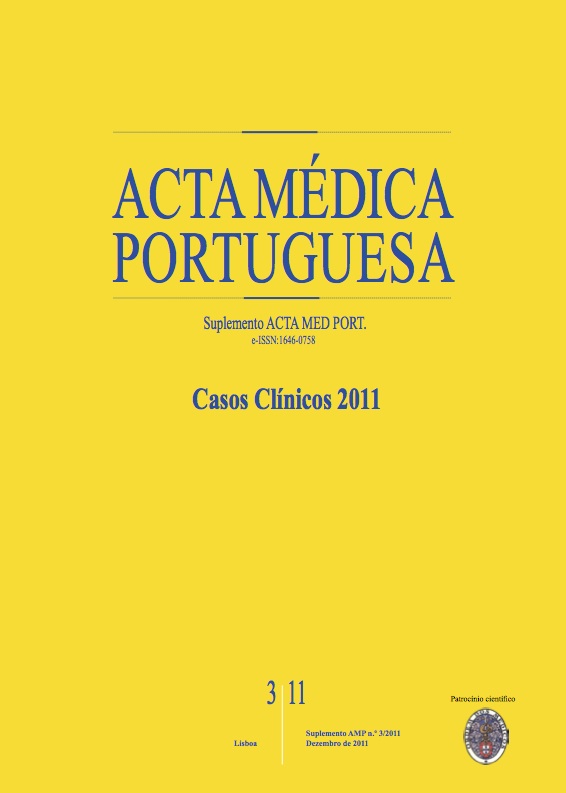Ovarian hyperstimulation syndrome in a spontaneous pregnancy.
DOI:
https://doi.org/10.20344/amp.1551Abstract
Ovarian hyperstimulation syndrome (OHSS) is considered to be an iatrogenic complication of ovulation induction therapy. However, OHSS may rarely be associated with spontaneous ovulatory cycles, usually in multiple or molar gestations or hypothyroidism. Clinical manifestations vary and may be potentially fatal in severe cases.A 28-year-old primigravid, with no history of an infertility treatment, presented with enlarged ovaries and ascite. The patient had minor abdominal discomfort, without other complains. Ultrasound evaluation showed enlarged cystic ovaries and mild ascites. Hormonal profile revealed increased estradiol levels, with normal TSH and hCG. The patient was managed expectantly with no complications.Although spontaneous OHSS is a rare entity, it is important to consider it in cases of bilateral ovarian masses in pregnancy. Three different mechanisms responsible for the occurrence of spontaneous OHSS have been described. This syndrome is thought to be secondary to promiscuity of the FSH receptor for hCG and/or TSH. It may occur with normal or increased levels of hCG and/or TSH.Downloads
Downloads
How to Cite
Issue
Section
License
All the articles published in the AMP are open access and comply with the requirements of funding agencies or academic institutions. The AMP is governed by the terms of the Creative Commons ‘Attribution – Non-Commercial Use - (CC-BY-NC)’ license, regarding the use by third parties.
It is the author’s responsibility to obtain approval for the reproduction of figures, tables, etc. from other publications.
Upon acceptance of an article for publication, the authors will be asked to complete the ICMJE “Copyright Liability and Copyright Sharing Statement “(http://www.actamedicaportuguesa.com/info/AMP-NormasPublicacao.pdf) and the “Declaration of Potential Conflicts of Interest” (http:// www.icmje.org/conflicts-of-interest). An e-mail will be sent to the corresponding author to acknowledge receipt of the manuscript.
After publication, the authors are authorised to make their articles available in repositories of their institutions of origin, as long as they always mention where they were published and according to the Creative Commons license.









